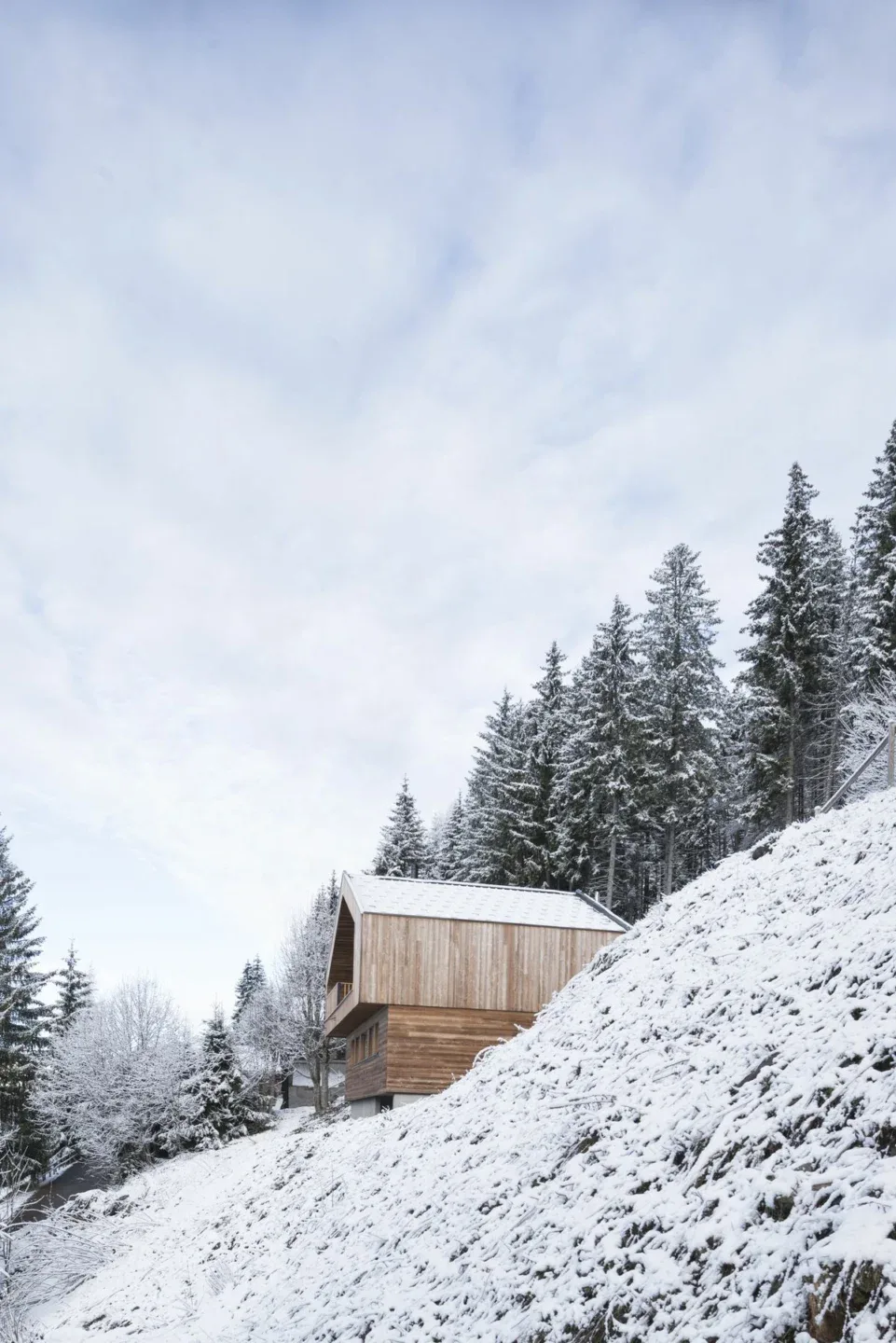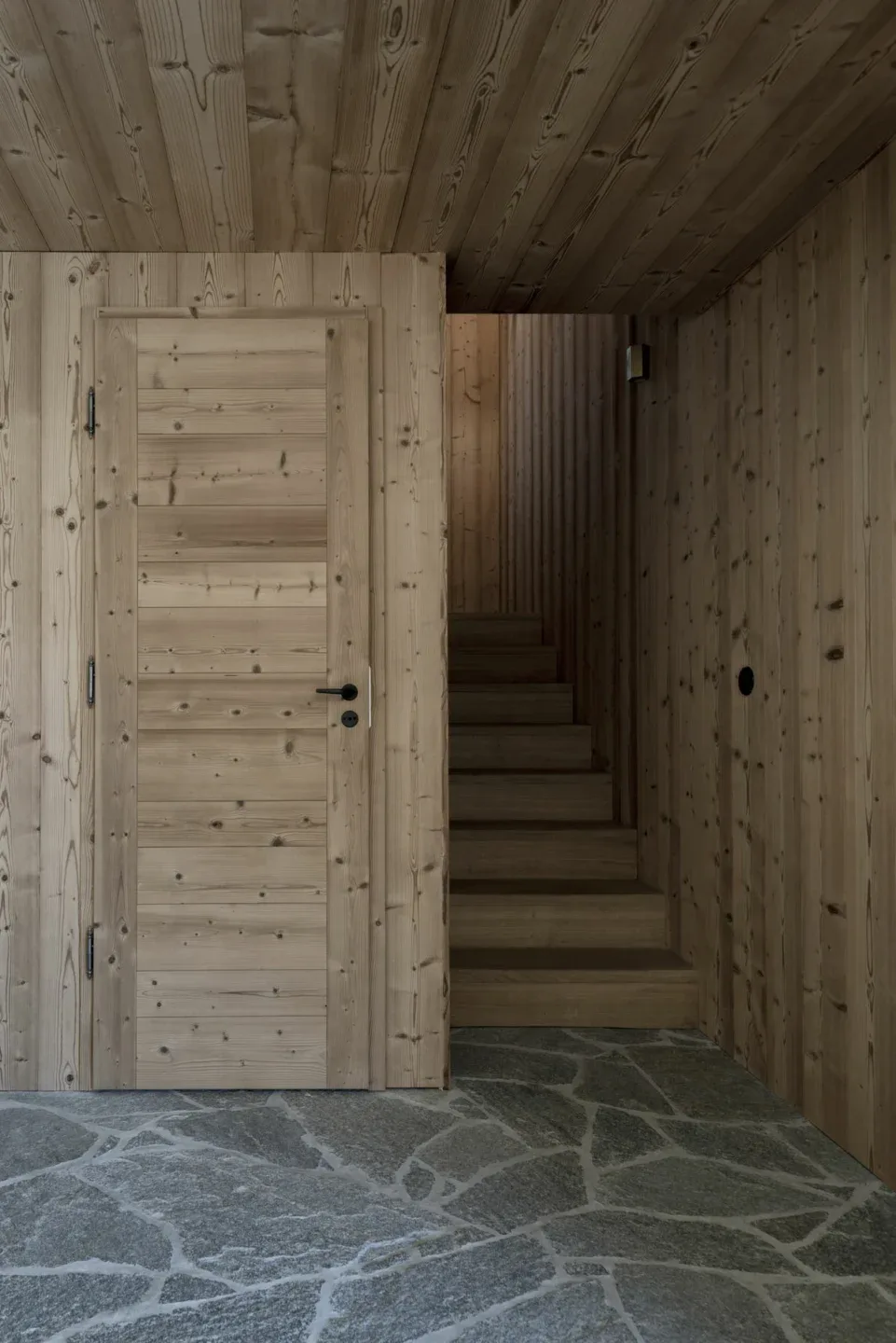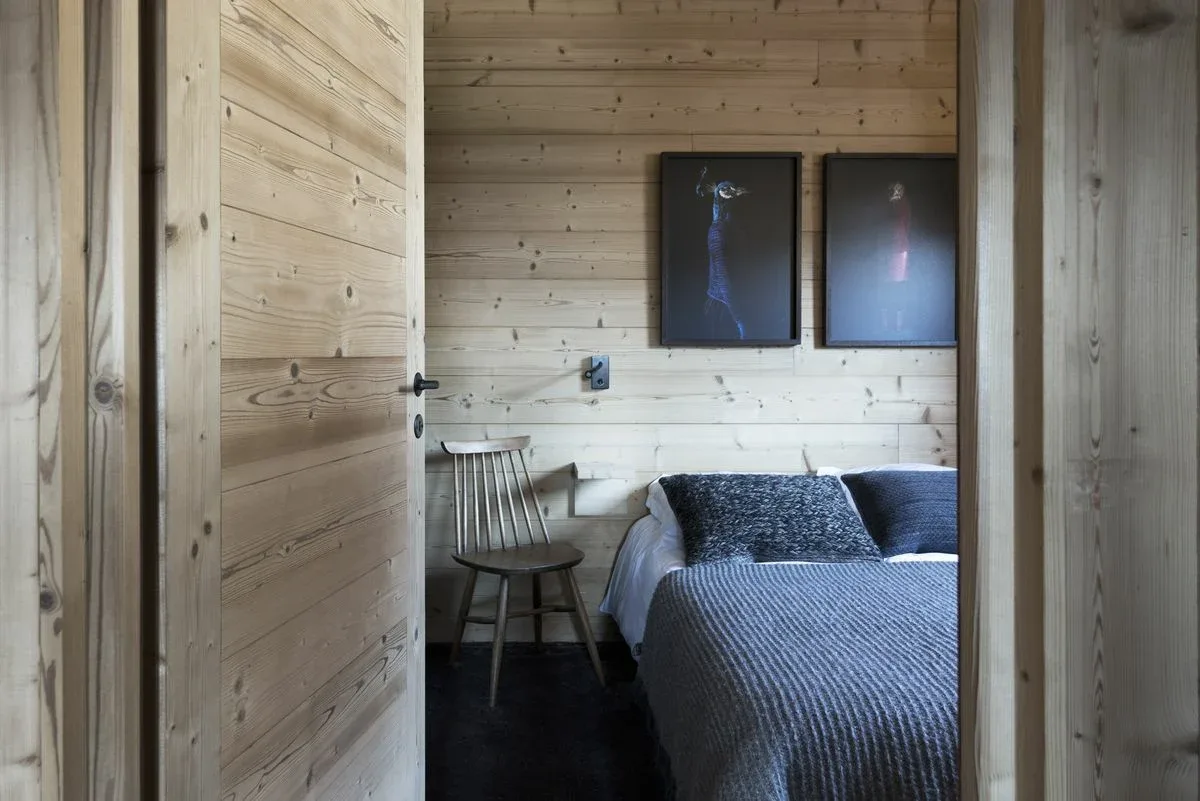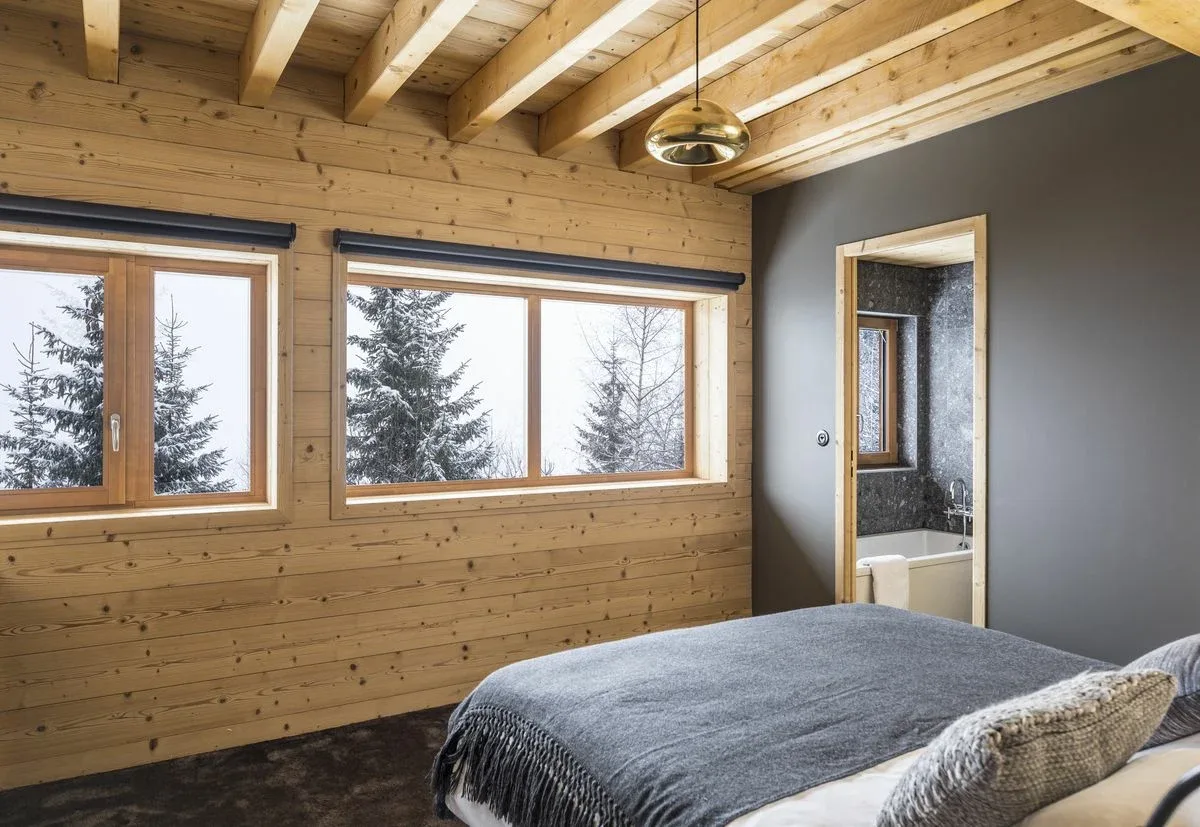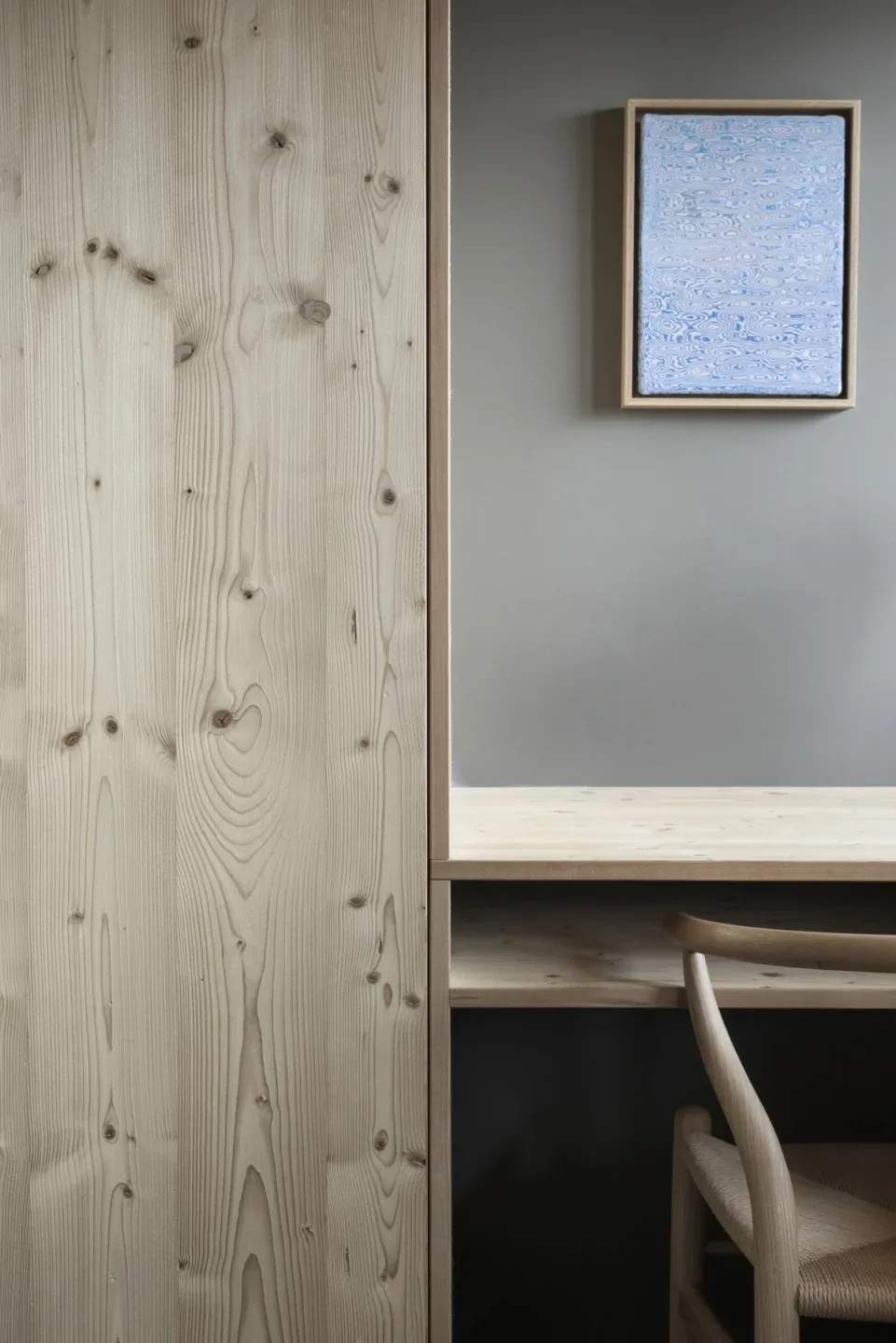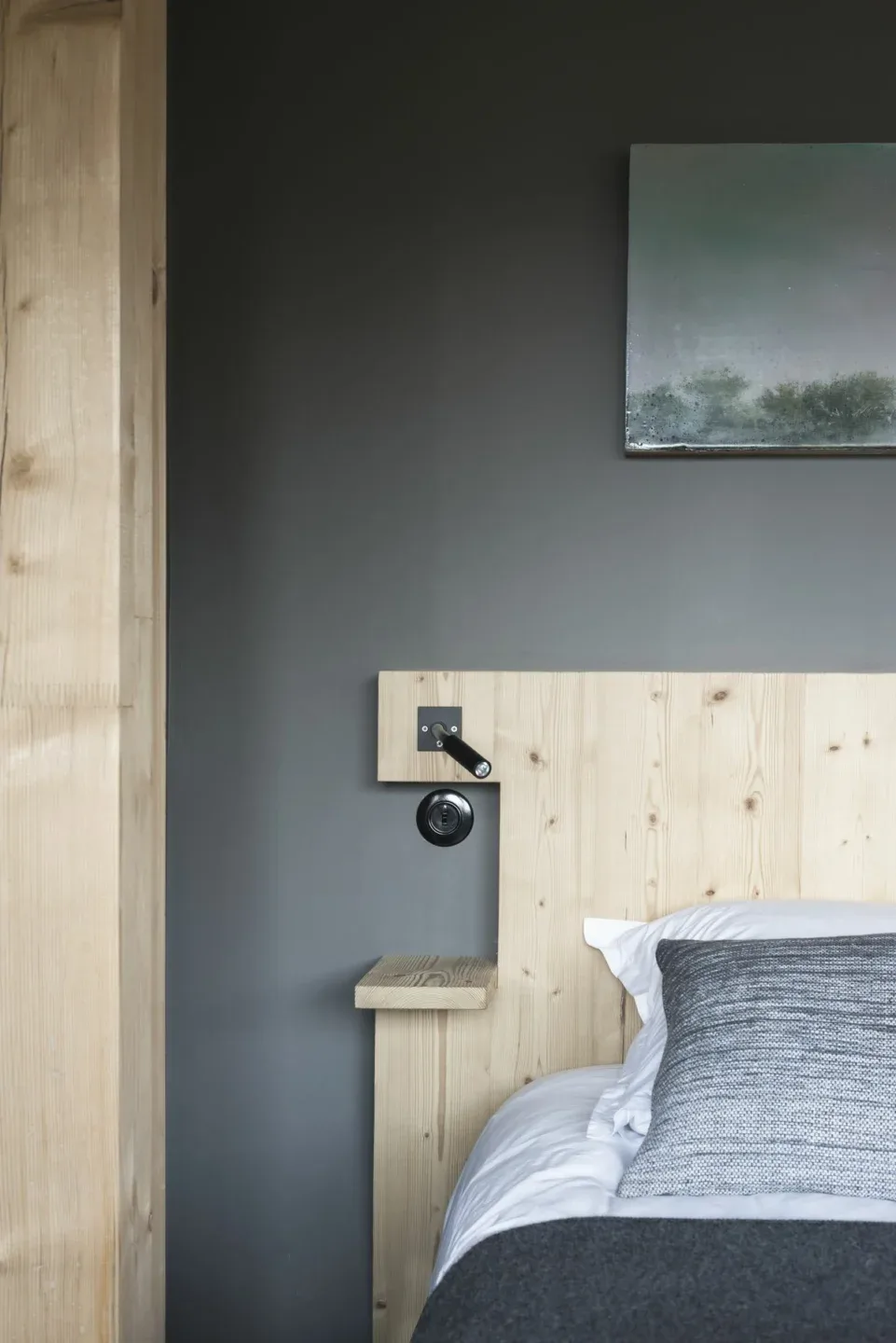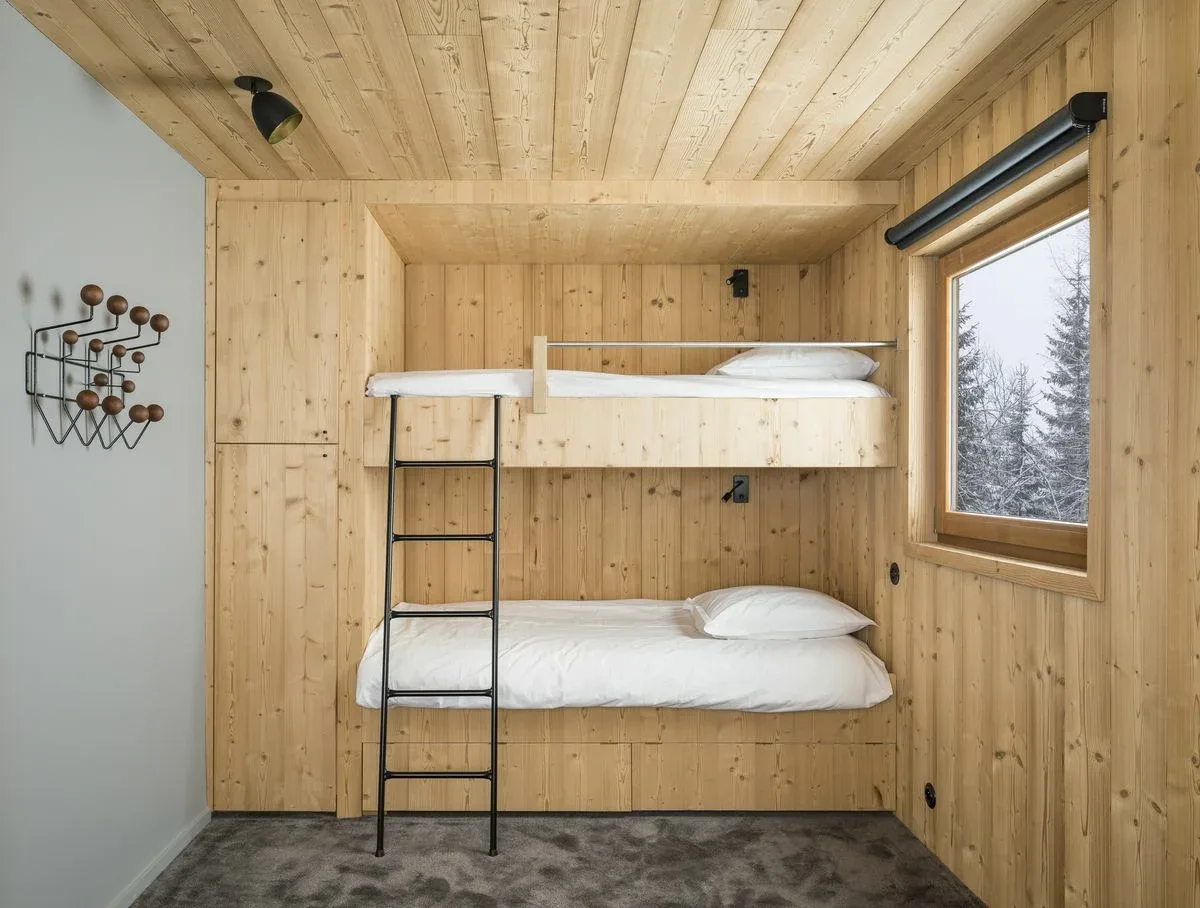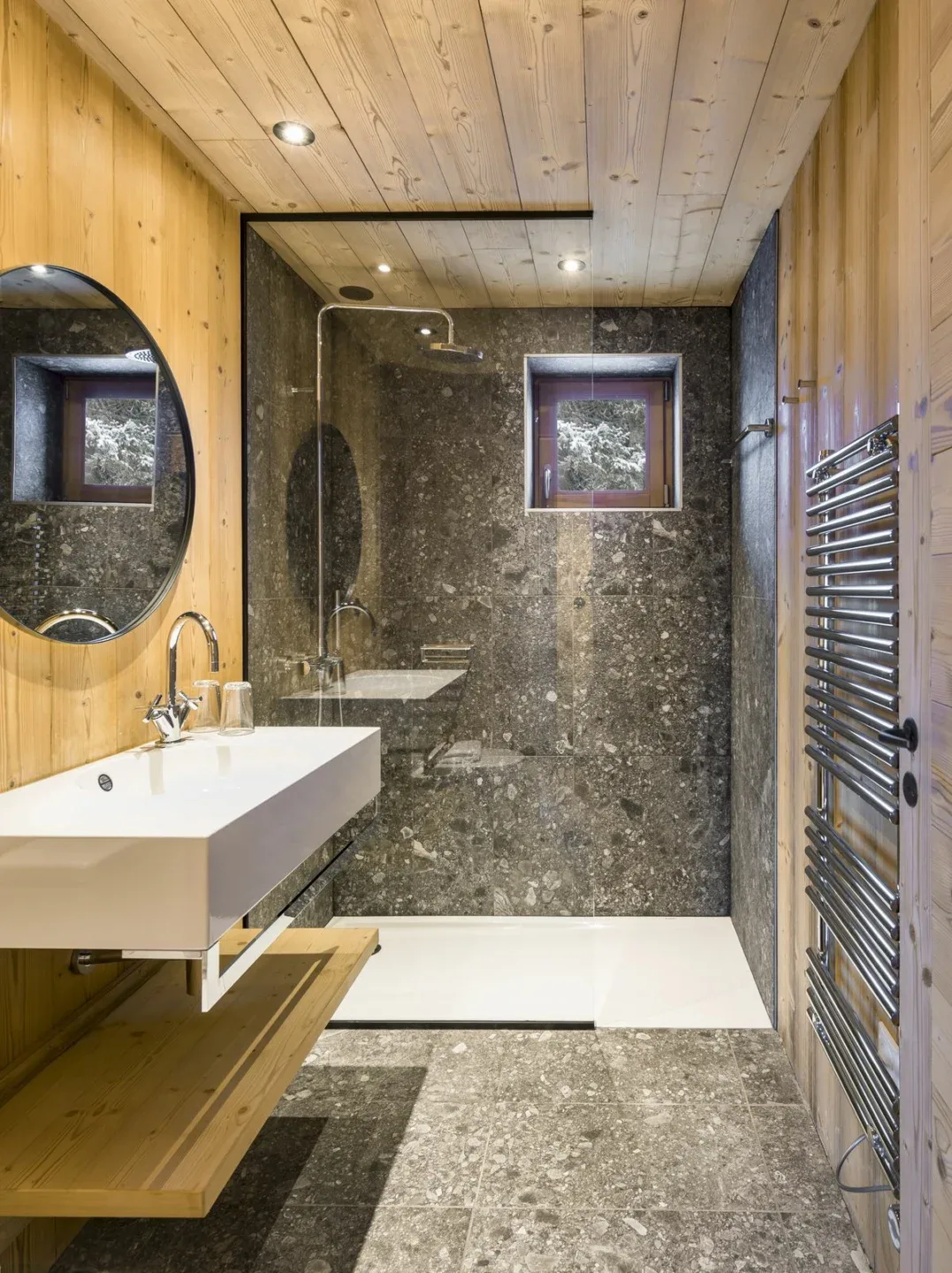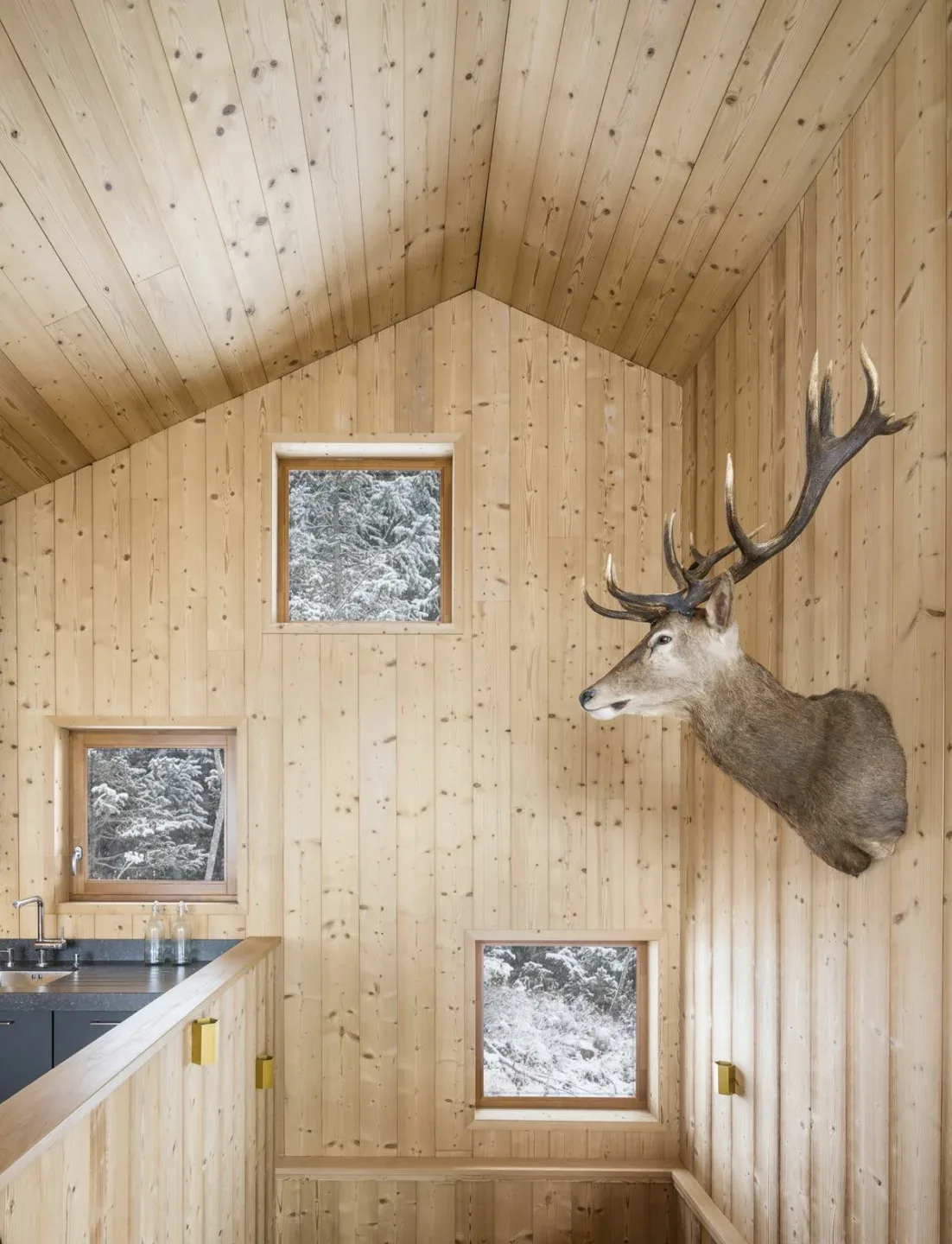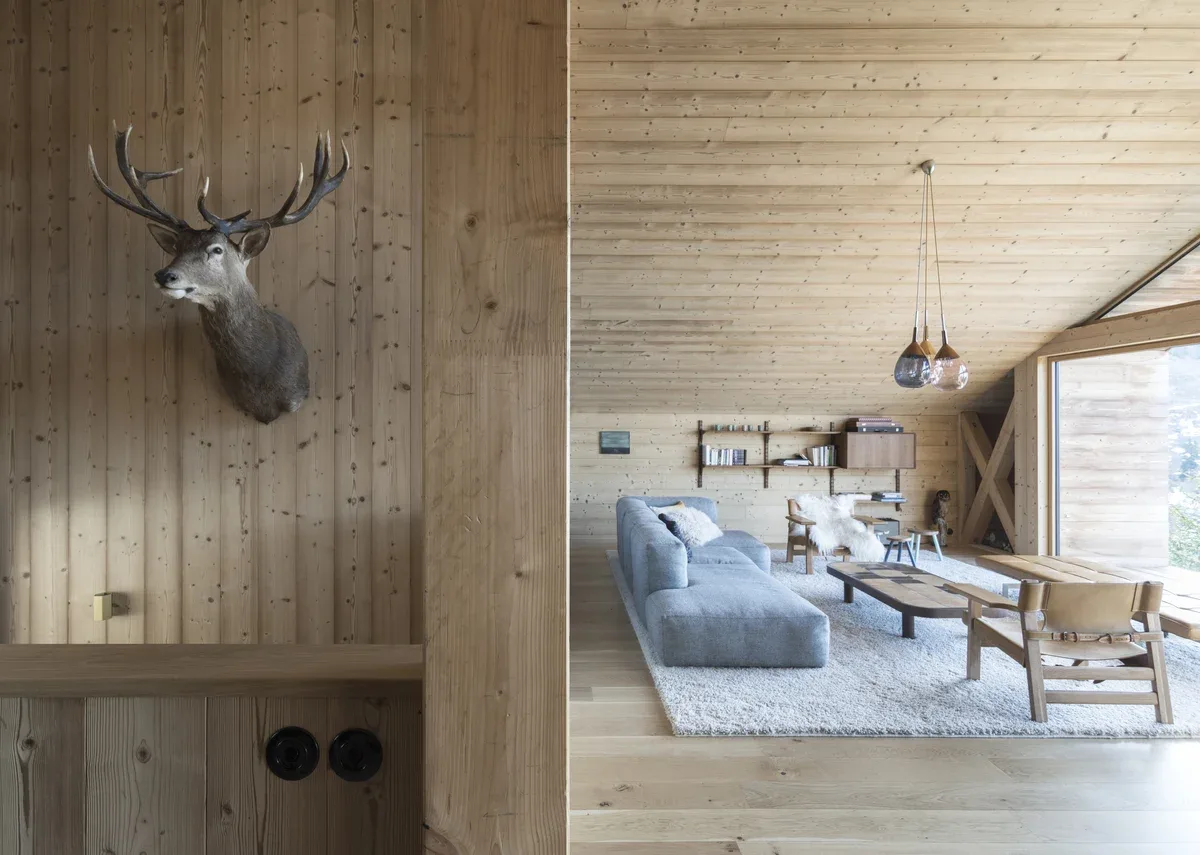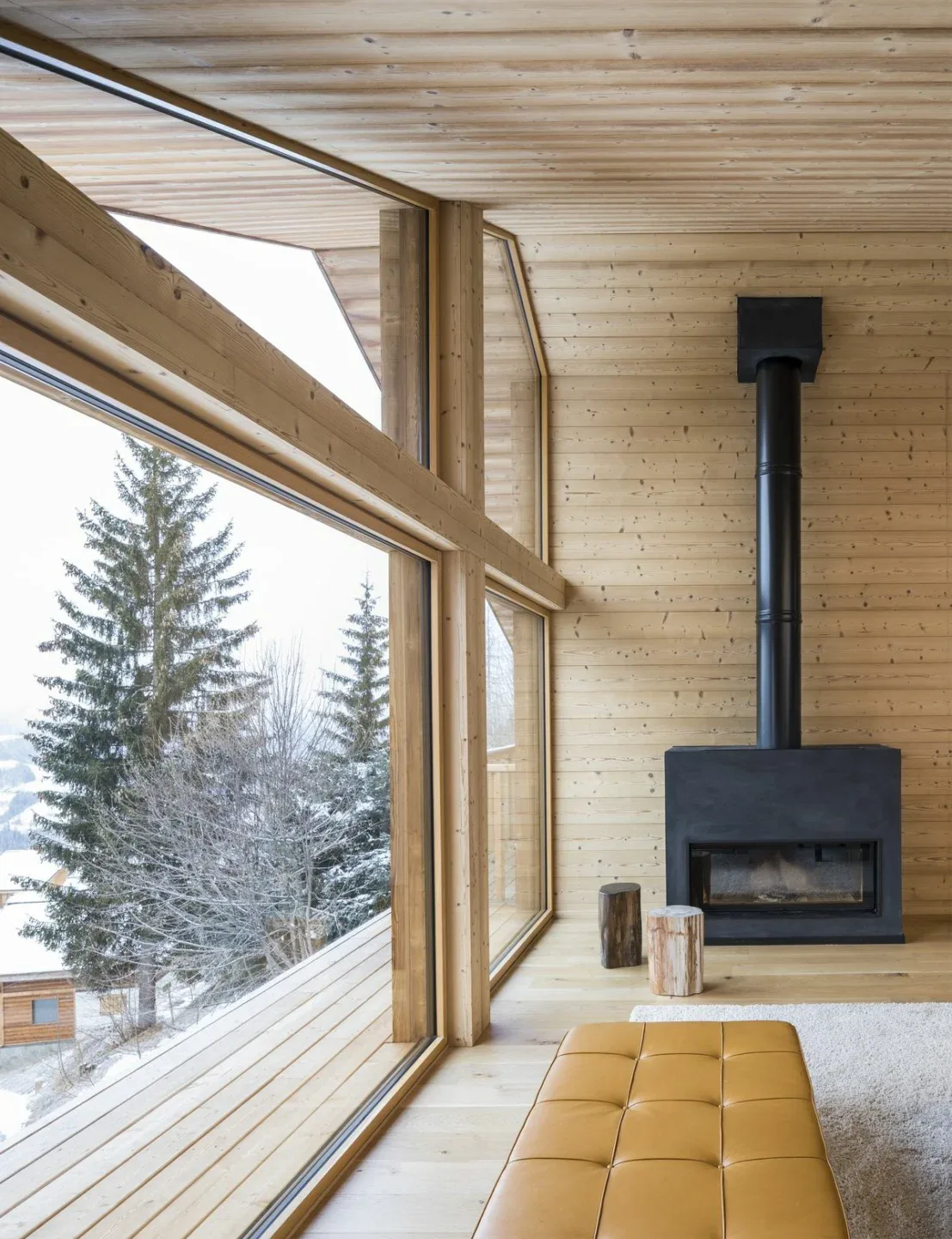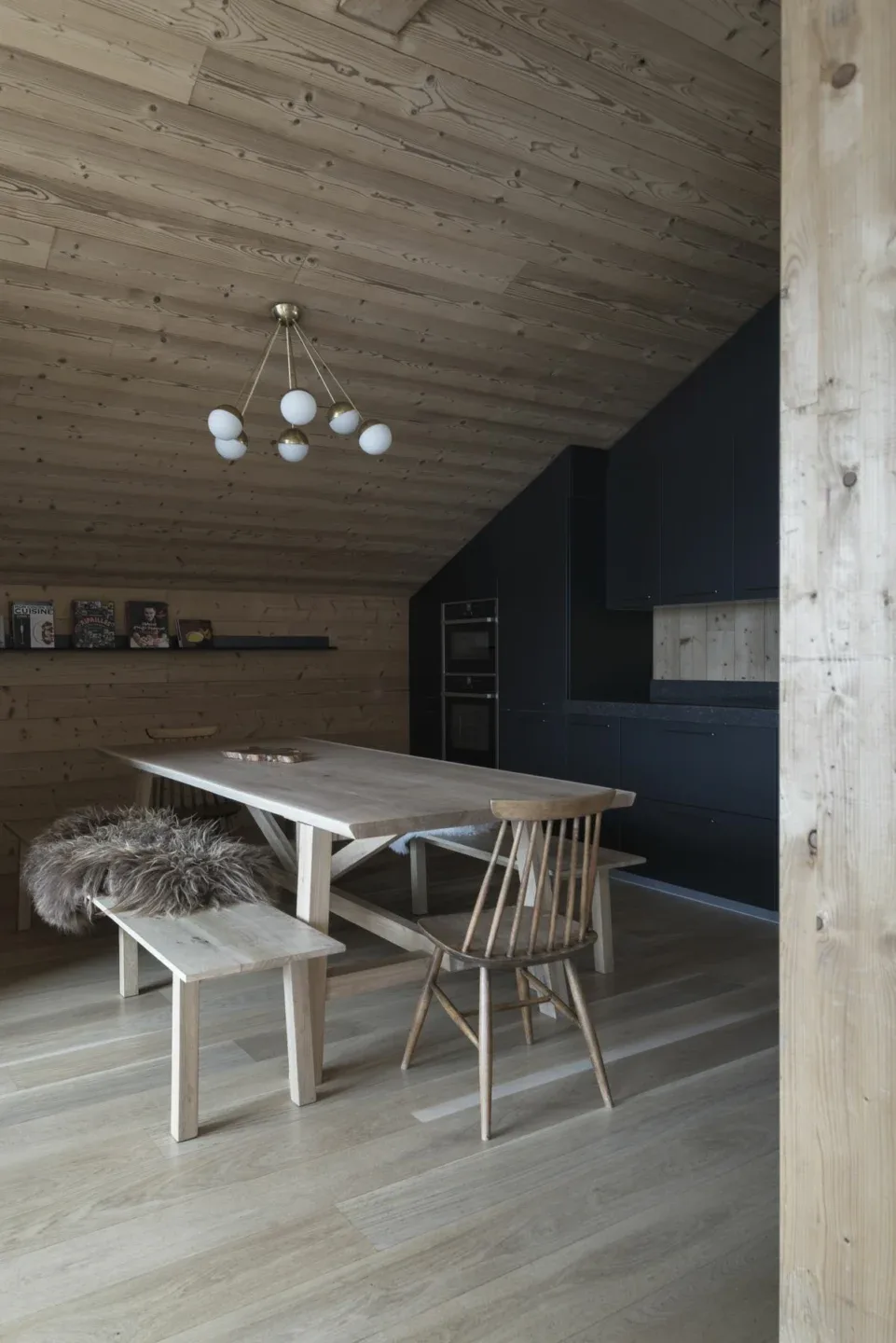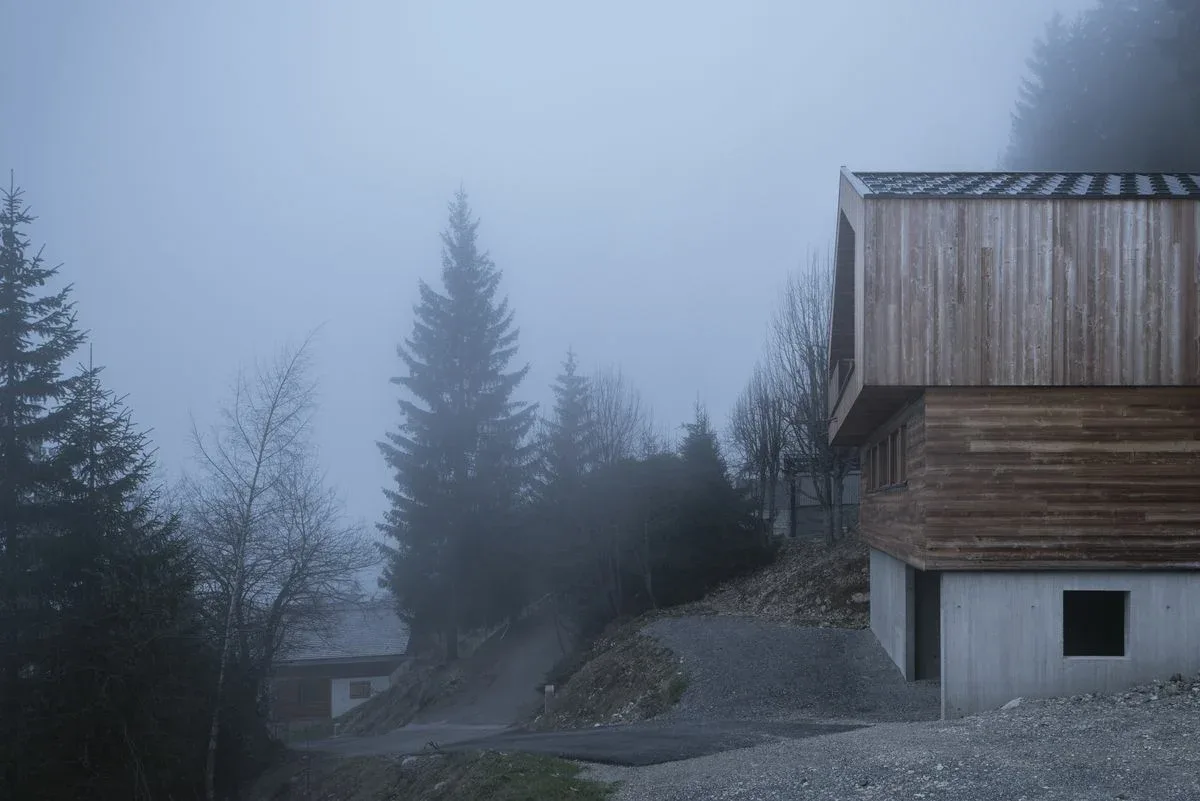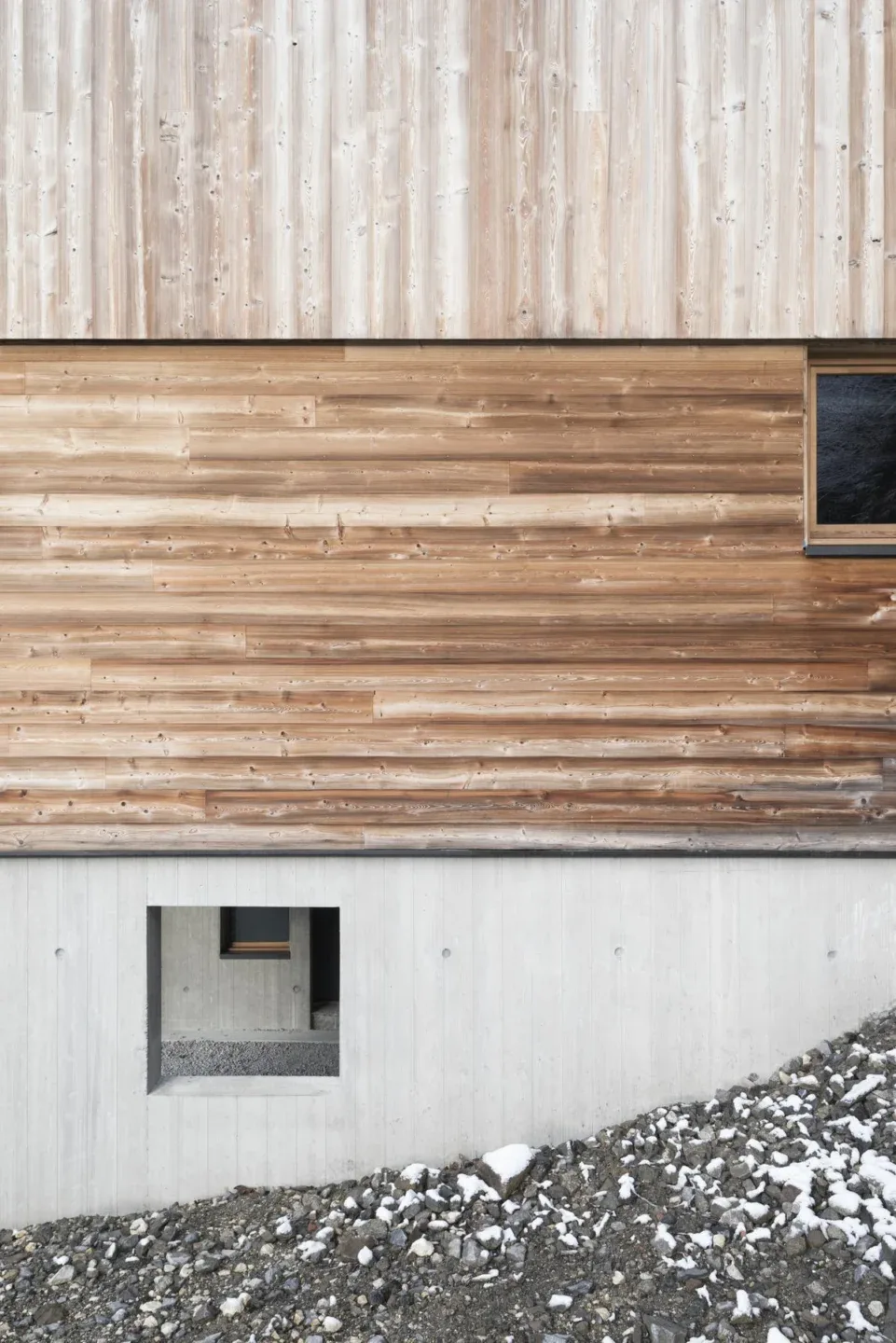In this highly preserved Alpine valley, stringent architectural guidelines allow for little architectural freedom. Strict guidelines are enforced to protect the local heritage but de facto create endless pastiche mountain homes.To circumvent these limitations Studio razavi architecture first became familiar with the existing history and culture so as to understand what functionally drove the designs. They then integrated this research into their design, avoiding all artificial or obsolete elements while making sure that the building was entirely code compliant from a heritage standpoint.
The vernacular building typology was one of stacking programs: farm animals on the ground floor, fodder on the floor above and living/sleeping quarters above. In a similar approach they devised the buildings in programmatic layers: car parking, mechanical room, ski storage on ground floor. Bedrooms on floor above and living quarters on the top floor. This allowed to create a progressive experience in the building, from darker, compressed spaces to gradually more open, light filled, higher ceilings and greater views out. Essentially indicating the shift in culture and use, thus creating coherence inside out & outside in. Celebrating nature was of course the pinnacle. This comes as the final experience, up on the last floor, fully framing the view by extending the building envelope to the outside. So as to protect the experience, material selection is kept at minimal variety.
Photography : Simone Bossi
